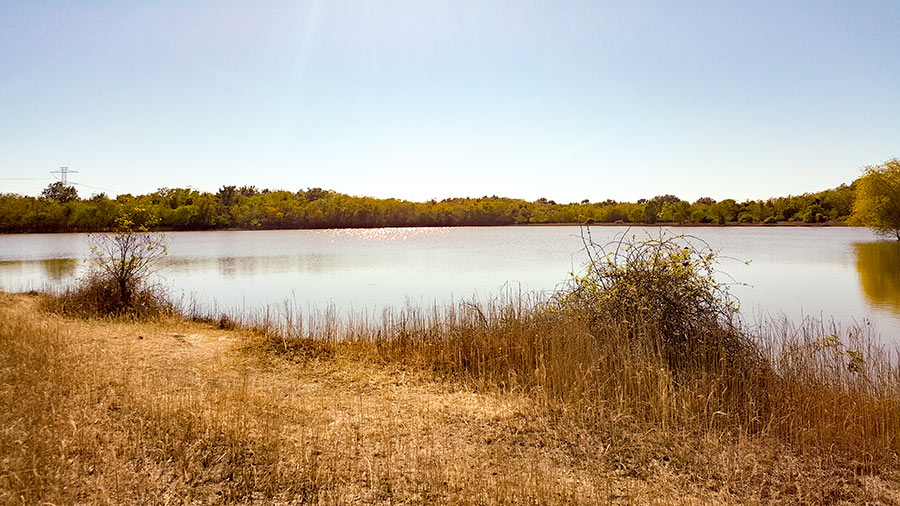THE ARMY CORPS SAW ALL YOUR ADDICKS AND BARKER LAWSUITS COMING — 23 YEARS AGO  A 1995 Army Corps of Engineers memo obtained by the Chronicle shows that the agency considered the possibility that dozens of lawsuits could be filed against it by flooded homeowners both upstream and downstream from the Addicks and Barker dams. “Given the nature of the expensive homes that would be flooded and the quality of legal representation these owners could afford, there is always the possibility of an adverse ruling,” but the likelihood of such an outcome would be low, it concluded. Those downstream from the reservoirs would have a weak case, the memo argued, because their home values benefit from the dams in the first place. And those upstream — inside the Addicks and Barker flood pools — would have to prove that flooding wasn’t just sporadic, but “frequent and inevitably recurring to amount to a taking of interest in property.” Regardless, says the document, “it would be prudent for Harris County to make sure owners, future developers, and future buyers are put on notice that they are in a reservoir.” That didn’t happen. [Houston Chronicle; memo] Photo of Barker Reservoir Near Addicks Clodine Rd. after Harvey: Kyle Steck
A 1995 Army Corps of Engineers memo obtained by the Chronicle shows that the agency considered the possibility that dozens of lawsuits could be filed against it by flooded homeowners both upstream and downstream from the Addicks and Barker dams. “Given the nature of the expensive homes that would be flooded and the quality of legal representation these owners could afford, there is always the possibility of an adverse ruling,” but the likelihood of such an outcome would be low, it concluded. Those downstream from the reservoirs would have a weak case, the memo argued, because their home values benefit from the dams in the first place. And those upstream — inside the Addicks and Barker flood pools — would have to prove that flooding wasn’t just sporadic, but “frequent and inevitably recurring to amount to a taking of interest in property.” Regardless, says the document, “it would be prudent for Harris County to make sure owners, future developers, and future buyers are put on notice that they are in a reservoir.” That didn’t happen. [Houston Chronicle; memo] Photo of Barker Reservoir Near Addicks Clodine Rd. after Harvey: Kyle Steck





There are many guilty parties in this debacle. Among them are every developer and home owner in the developed Katy Prairie area, i.e, South of I-10, west of Addicks to Fulshear. That area never should have been developed in the way that it was. A tremendous amount of rainwater that previously was absorbed by the prairie is now funneled into the drainage systems directly to the Barker/Addicks reservoirs. That action adds considerably to the sudden fulling of the reservoirs. Those downstream of Addicks and Barker are now paying for that shortsightedness with damaged and destroyed homes and property, reduced property values and higher insurance costs.
As that area was being developed there were many voices heralding this message. Unfortunately the developers can only hear the cry of their pocket books.
Not to be insensitive,
but my happy take-away is that the Army Corps has been on top of things, aware and proactive.
@ Shrub: The natural soils, vegetation, and topography of the Katy Prairie do very little to absorb runoff from a major downpour. There was an ecologist that promotes the preservation of the Katy Prairie that recently commented on this, and it was just a few inches. Based on that, I would think that new development under modern stormwater runoff regulation probably does more to protect what’s downstream than open prairie does…although that, too, would be overwhelmed by a storm like Harvey.
.
Also, if rules are tightened then developers will simply abide by them. Developers are interested in ROI. If they directly bore the costs then they’d just plug new costs into their financial models and bid down the cost of raw land until the highest and best use isn’t what they develop, or else pass the cost onto consumers. You can think of them as middlemen and they always get their cut. But that’s not actually how it works. In fact, if development standards are raised then that’ll be borne by MUDs, which levy a tax paid by the ultimate property owners. In an efficient market, the values of homes in older subdivisions should rise because they’ve been grandfathered into a lower-cost property. However, very few property owners are savvy to property tax rates and so citizens bear the brunt of the costs and do so inequitably.
Amen!
@Shrub. You should include the USACE in your list. Yes, they were prescient to foresee the lawsuit, but unfortunately not foresighted enough to maintain the reservoir. They’ve easily allowed 25% of the reservoir capacity to be lost due to siltation and vegetation overgrowth.
@Shrub: Why single out development in that area? Why not blame all the other development in the Houston metro area? Did the Katy Prairie have some special water absorbing powers that the rest of the terrain lacks?
@Memebag: The part of Katy Prairie around Cinco Ranch used to hold lots of water when it was used for growing rice. It didn’t necessarily absorb it, but it held it just fine.
https://www.houstonchronicle.com/business/article/As-rice-fields-give-way-to-suburban-sprawl-7948114.php
The Corps of Engineers, Harris County Flood Control District and The City of Houston knew of the consequences for development on the prairie and in the floodplains on the west and northwest sides. Even as we speak development continues and permits are being issued daily. The fact that the federal government decided that lawsuits were inevitable and was willing to take the potential financial lost of those lawsuits as well as the payouts for federal flood insurance, FEMA claims and deaths should be a wake-up call to all of us. They do not care about our lives, property or hardships. The fact that some of you in your comments never mention the lost of human life only the lost of property is a sign of the inhumane nature of modern civilization. The love of money aka GREED is responsible for our reality and unfortunately no new ordinances, laws or proposed restrictions can deal with this truth. We have perhaps 10s of thousands of acres of land available for infill development in the city but developers would rather destroy the environment, put people and property in danger just to make a buck is the cancer in this city that MD Anderson cannot cure. Mayor Turner and Judge Emmet mean well but their proposals fall short of what the city really needs. A general lack of morals and principles plague our leadership and elite citizens. To bad Harvey couldn’t wash the real filth of our city away.
@GoogleMaster: But rice paddies can only hold flood water if they aren’t already flooded to grow rice. When they are flooded they will hold as much additional water as paved land. I lived in Sagemont (south east side, just outside the beltway, before there was a beltway) in the 1970s and that land was all rice paddies, too. Katy Prairie isn’t the only rice growing land that turned into people growing land.
@ Memebag: why the Katy Prairie? Because water flows from west to east in this general area.
@Houstonreader: Water only flow west to east when there is room for it in the east.
so there are actually people who are arguing that replacing prairie land with raised construction and paved areas doesnt have a significant impact on downstream flooding? you people either have a grudge against the army guys, or simply delight in being a contrarian for contrarian’s sake.
@ Memebag: To the east of the Katy prairie lies the city of Houston and then Galveston Bay. We are trying to protect the city as run-off inevitably makes its way, west to east, to the bay. This is why the Addicks and Barker dams were built in the first place. Look at a map, note where those dams are located with respect to city, and think it through.
@Houstonresident: Understood, but not related to my posts. Shrub is assigning blame to people who built and bought on the Katy Prairie. The blame can just as easily be assigned to the people who built and bought east, west, north and south of there. We all displace something.
@ SimplySid & floodtrolls: IIRC the modern regulatory framework for stormwater detention was instituted in the early- or mid-90s. Practically all of the existing development right up until this Corps of Engineers memo came out would certainly have contributed to issues with runoff. These development standards require new stormwater detention capacity to retain water up to a 100-year storm and that all living areas be raised up out of the floodplain. This has been achieved in part with detention ponds and in part by grading the land so as to build up the lots. The prairie itself cannot achieve that, either in its natural state or as rice fields…so, development there would seem to be a net improvement. These same standards are also applied to infrastructure such as the Grand Parkway.
.
What happened in the Barker/Addicks floodpools is a different matter. Development there should never have been allowed at all, with or without notification of property owners, and it occurred as a consequence of local governments over the objections of the Corps of Engineers and put them in a very difficult position.
.
And as for the idea that encouraging development in the city rather than on greenfield sites in suburbia will reduce regional flooding risk, actually it’s probably the opposite. Many infill parcels aren’t sized/shaped in a way that they can physically accommodate any on-site stormwater detention, so developers pay an impact fee into a fund to provide offsite detention or other flood control infrastructure. That sounds reasonable, but the problem is that the location of that infrastructure is not very evenly-distributed or even necessarily within the same watershed as the development — and meanwhile, the infill development 1) contributes to runoff locally while 2) being impacted by legacy development that does create runoff issues, and 3) if it is a substitute for greenfield development then not contributing to upstream stormwater detention. Although this circumstance may put more people in a living area that is at a higher elevation, and you’re right, that might save some lives, if it increases flood risk for existing low-lying legacy development. Pardon the pun, but it would be a wash.
The people defining a floodplain do so in a descriptive way – describing the current state of elevations. But I think that, at least in the case of Katy/Addicks, developers building around (but not in) the floodplain see it in almost a prescriptive manner – i.e. direct all water here, as though the floodplain is a lake or Galveston Bay or something.
So people inside the floodplain actually experience worse and worse flooding as the years go by, which has certainly been the case for homes inside the Addicks dam. This is why I think these two disparate approaches need to be mitigated/reconciled somehow when it comes to dealing with excess water vis a vis prairies, bayous and floodplains, particularly in places where the development cannot be undone.
@anon22: If “floodplain” is descriptive (“this is where the water will flow”) then where else could the water be directed?
.
Also, DON’T EVER BUILD HOUSES INSIDE A RESERVOIR! It’s weird that anyone would ever have to say that.
It’s “weird” because it’s pointless. All of the Gulf Coast is more or less a floodplain/reservoir. It wasn’t just Katy that was flooded.